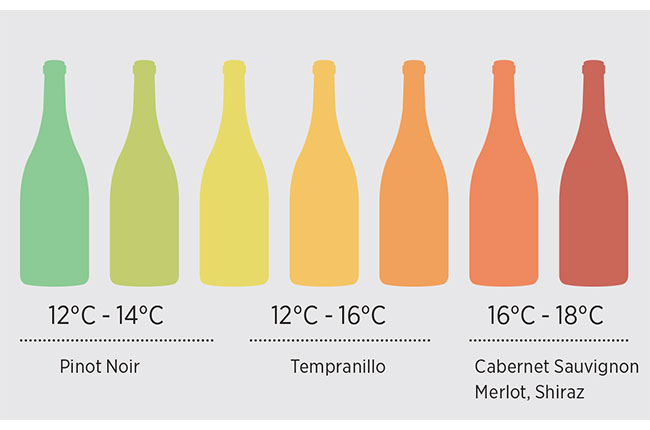Options if you need to chill wine quickly:
Freezer
If you’re at home, then placing your bottle in the freezer can help to chill wine fast.
‘You can wrap the bottle in a wet cloth then put it in the freezer for 10 minutes,’ master sommelier and restaurateur Xavier Rousset MS told Decanter.com in 2016.
Just make sure you don’t forget about it. Even some Decanter staff members have had their own frozen wine disasters.
The union for Champagne houses advises against putting Champagne in the freezer.
Ice bucket
It doesn’t have to be particularly sophisticated, although an old bucket or washing-up bowl might not create quite the same romantic setting at the dinner table.
The key advice is that you shouldn’t just fill the whole container with ice cubes and expect to chill wine in record time.
If you use roughly 50% ice and 50% cold water then the chilling process will happen more quickly. The water will help to transfer heat from the bottle.
‘Use plenty of ice cubes (ideally crushed ice) in a bucket with some cold water and lots of salt – yes, salt,’ said Rousset.
‘Make sure the bottle is submerged to the top to be more efficient. Your wine should be cool in about 15 minutes.’
Ice jackets can be a good way of keeping a cool wine at a constant temperature, but they don’t tend to be as efficient in quickly cooling a wine down.
Frozen grapes
If you’ve poured the wine and realise that it’s too warm, then there are some options.
This method takes a bit of forward planning, but you could try freezing grapes and dropping them into your wine, which won’t dilate it, as suggested by Peter Richards MW.
You could also experiment with gadgets that claim to be able to cool wine quickly.
Ice cubes (But it’s controversial…)
One of the most controversial methods could be to consider the pros and cons adding ice cubes.
This is probably not a technique for your vintage Champagne – and many critics would say there is never a good time at all – but you might see some rosé or lighter white wines served with ice in restaurants, for example.
Richards told Decanter in 2016 that he was in favour of people doing as they wished with their wines, but he warned that the ice can melt and dilute the wine.
Best serving temperatures for different styles of wine
White wines
Light bodied wines ideally should be served chilled, between 7-10 ̊ C (44- 50 ̊ F), whereas ones with a bit more weight – perhaps an oaked style – can be served slightly warmer, at 10-13 ̊ C (50 – 55 ̊ F).
Sparkling wines should be served well chilled, and the Champagne house union recommends serving at 6-9 ̊ C.

The best temperatures for white wines. Design: Annabelle Sing / Decanter
Yes, red wines can be chilled
Contrary to popular belief, red wines can benefit from being slightly chilled.
As with white wines, the lighter styles benefit from being served more chilled than heavier ones. However, even a bold Cabernet Sauvignon could be lightly chilled to prevent it from being served too warm.
As Decanter’s Rhône expert Matt Walls said, ‘much warmer than 18°C for a red is too high. Its flavours become blurred and soupy.’

Serving temperatures for red wines. Design: Annabelle Sing / Decanter
See also:
What’s the perfect red wine serving temperature?
Article updated in May 2020, following a previous update in July 2019. Originally published in 2016.







